In our previous post on the Gospel of Jesus’s Wife, we remarked, as others have done, that line 6 of the papyrus also goes back to a logion from the Gospel of Thomas. Here is the parallel:
 There are several arguments which point to this possibility: 1) the previous rendering of this line as “Let wicked people swell up […],” although not entirely impossible, would constitute an awkward and unparalleled cursing formula; 2) with the exception of
There are several arguments which point to this possibility: 1) the previous rendering of this line as “Let wicked people swell up […],” although not entirely impossible, would constitute an awkward and unparalleled cursing formula; 2) with the exception of ![]() all surviving words on this line are recoverable in the Gospel of Thomas, 41.1-3; 3)
all surviving words on this line are recoverable in the Gospel of Thomas, 41.1-3; 3) ![]() seems to be a misspelling which the copyist attempted to correct. This is relatively clear from the unusual shape of the first epsilon, which seems to derive from an iota:
seems to be a misspelling which the copyist attempted to correct. This is relatively clear from the unusual shape of the first epsilon, which seems to derive from an iota:
The problem is that in this case the text is grammatically incorrect and such a mistake could have been done only by someone who does not have a proper knowledge of Coptic language. If we have the imperative ![]() , then we would not find there
, then we would not find there ![]() which marks the aorist of the third person masculine singular. The correct form of the sentence would be
which marks the aorist of the third person masculine singular. The correct form of the sentence would be ![]() , “] let wicked man bring [forth] …” (the relative particle goes better with a definite noun, but Ariel Shisha-Halevy suggested us that this form is also acceptable).
, “] let wicked man bring [forth] …” (the relative particle goes better with a definite noun, but Ariel Shisha-Halevy suggested us that this form is also acceptable).
Another more likely possibility is that the intention was to write “No wicked man brings [forth]” (perhaps ‘good deeds’), taking ![]() as a dialectal variant of the negative aorist
as a dialectal variant of the negative aorist ![]() Michael Grondin remarked in a comment to our post that precisely this form of the negative aorist is attested several times in the Gospel of Thomas (cf. 39.6; 39.13; 41.17; 46.21). To be sure, in the Gospel of Thomas 41.17,
Michael Grondin remarked in a comment to our post that precisely this form of the negative aorist is attested several times in the Gospel of Thomas (cf. 39.6; 39.13; 41.17; 46.21). To be sure, in the Gospel of Thomas 41.17, ![]() is employed exactly in this sense, that is, “no man.” Consequently, we believe now that the text was meant to say “no wicked man brings [forth] …,” but the result is still ungrammatical if we take
is employed exactly in this sense, that is, “no man.” Consequently, we believe now that the text was meant to say “no wicked man brings [forth] …,” but the result is still ungrammatical if we take ![]() to be a misspelling of
to be a misspelling of ![]()
We now have a better picture of GosJesWife line 6, which takes over from the Coptic version of the Gospel of Thomas logia 45 & 47 not only a cluster of words, but also a dialectal feature.










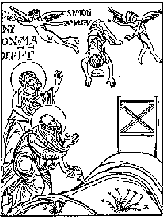




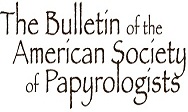
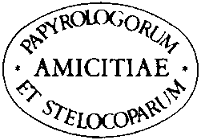
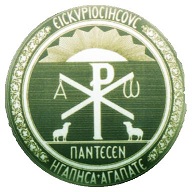





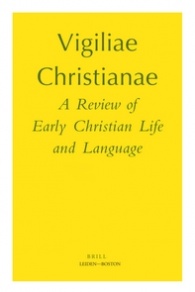






Pingback: Scholarly investigations into the Gospel of Jesus’ Wife available online. | Near Emmaus
Pingback: The Gospel of Jesus’ Fake Wife, or the Fake Gospel of Jesus’ Wife?
This all seems to show that the author had a funny script, unorthodox writing utensil, and a less than perfect grasp of Coptic. He or she may have also had access to the Gospel of Thomas or a similar document. How do we differentiate between an ancient author with those traits and modern author/forger with similar traits?
By testing the ink 🙂
Thank you for the excellent observation about the iota turned epsilon. I can’t help but note that someone with limited knowledge of Coptic who was relying on Grondin’s interlinear for source material might have mistakenly thought that he or she had created a grammatically correct Coptic sentence . . . http://www.gospels.net/gjw/GJW6.pdf Cheers, Andrew Bernhard (gospels.net)
Andrew, your suggestion is definitely interesting. But the next step is the ink testing.
Alin, I just wanted to say that I admire your work. Salute!
Thanks, Johnny!
Thanks, Alin. Very good work. Interestingly, Reuters has reported from the Vatican City on 28.09.12 that the Vatican thought the document was a clumsy forgery: “Substantial reasons would lead one to conclude that the papyrus is indeed a clumsy forgery,” the Vatican’s newspaper, L’Osservatore Romano, said in an editorial by its editor, Gian Maria Vian. “In any case, it’s a fake.”
This is the first impression someone gets by checking the handwriting. I think that’s what Alberto Camplani also said in L’Osservatore Romano.
Many doubts have already been expressed. Now we have to wait for the papyrus and ink testing.
Pingback: News in the Blogroll « Heterodoxology
Another great post, guys! Added you to the blogroll at Heterodoxology.
Thanks a lot, Egil. I’ll do the same with your blog.
Cheers,
Alin
Thanks for a fascinating post, Alin. In response to Abe’s question above, I would say that the balance of probabilities has to be that the author of the fragment accessed our Coptic Thomas in the post 1945 period, i.e. after it came out of the jar, and found its way into multiple print and electronic editions. It is of course possible that the author accessed that specific text at some point in the fourth century, before was buried in the jar in Nag Hammadi, or that there was another text with the same line breaks, but on balance, this is far less likely than that it was accessed in the recent period.
Published the ‘Secunda Recensio’ of my Palaeografical Report of September 18, 2012 about Coptic Papyrus of the alleged “Gospel of Mary, wife of Jesus”. More than one score of objections and arguments based on evidences. Evidence about ethnic origin-cultural of the author of the Papyrus…
Kind Regards,
Georgeos
If the sign on line 4 is not an oblique stroke but the traces of a kappa, as you suggest, I promise I’ll eat the papyrus :).
Jajaja!! 🙂 Very Good!
If you agree that the kappa on line 7 looks like a khi, why do you want to eat the fragment because of this three-stroke “letter” ?
I haven’t yet read all of the numerous papers and comments about the Coptic fragment published by Dr Karen L. King last month, maybe somebody has already pointed out what I’m now saying in this comment.
For Dr. Karen L. King, the syntax of →1 is consistent with the Coptic grammar (Layton, « A Coptic Grammar », § 330 and 173), but I do not know the origin of her statement « The absence of the direct object marker ⲙ̅- before ⲡⲱ̣[ⲛϩ is therefore well-established. ». (Cf. http://twitpic.com/b2f0eh)
For Prof. Francis Watson and Prof. Leo Depuydt, the omission of the “object marker” is an error. (Cf. http://twitpic.com/b2f0zy)
Andrew Bernhard has noticed this omission, but without any further comment. (Cf. http://twitpic.com/b2f1dk)
What astonishes me is that this omission agrees with the text found in Michael Grondin’s « Interlinear Coptic/English Translation of “The Gospel of Thomas” », where the direct object marker is missing. (Cf. http://twitpic.com/b2f1s2 against e. g. http://twitpic.com/b2f26i)
May I then paraphrase Andrew Bernhard’s paper : « Does Line 1 of “The Gospel of Jesus’ Wife” Reveal the Author’s Dependence on Grondin’s « Interlinear Translation of “The Gospel of Thomas” »?” ?
Links :
— Karen L. King : http://news.hds.harvard.edu/files/King_JesusSaidToThem_draft_0917.pdf;
— Francis Watson : http://markgoodacre.org/Watson.pdf;
— Andrew Bernhard : http://www.gospels.net/gjw/GJW-GThRelationship.pdf;
— Michael Grondin : http://www.gospel-thomas.net/gtbypage_112702.pdf;
— Early Christian Writings : http://www.earlychristianwritings.com/text/thomas-coptic1.html;
— Andrew Bernhard : http://www.gospels.net/gjw/GJW6.pdf.
I haven’t yet read all of the numerous papers and comments about the Coptic fragment published by Dr Karen L. King last month, maybe somebody has already pointed out what I’m now saying in this comment.
For Dr. Karen L. King, the syntax of →1 is consistent with the Coptic grammar (Layton, « A Coptic Grammar », § 330 and 173), but I do not know the origin of her statement « The absence of the direct object marker ⲙ̅- before ⲡⲱ̣[ⲛϩ is therefore well-established. ». (Cf. http://twitpic.com/b2f0eh)
For Prof. Francis Watson and Prof. Leo Depuydt, the omission of the “object marker” is an error. (Cf. http://twitpic.com/b2f0zy)
Andrew Bernhard has noticed this omission, but without any further comment. (Cf. http://twitpic.com/b2f1dk)
What astonishes me is that this omission agrees with the text found in Michael Grondin’s « Interlinear Coptic/English Translation of “The Gospel of Thomas” », where the “direct object marker” is missing. (Cf. http://twitpic.com/b2f1s2 against e. g. http://twitpic.com/b2f26i)
May I then paraphrase Andrew Bernhard’s paper : « Does Line 1 of “The Gospel of Jesus’ Wife” Reveal the Author’s Dependence on Grondin’s « Interlinear Translation of “The Gospel of Thomas” »?” ?
Links :
— Karen L. King : http://news.hds.harvard.edu/files/King_JesusSaidToThem_draft_0917.pdf ;
— Francis Watson : http://markgoodacre.org/Watson.pdf ;
— Andrew Bernhard : http://www.gospels.net/gjw/GJW-GThRelationship.pdf ;
— Michael Grondin : http://www.gospel-thomas.net/gtbypage_112702.pdf ;
— Early Christian Writings : http://www.earlychristianwritings.com/text/thomas-coptic1.html ;
— Andrew Bernhard : http://www.gospels.net/gjw/GJW6.pdf.
Michael Grondin : The “direct object marker” is missing in the main file (http://www.gospel-thomas.net/gtbypage_112702.pdf) but present in this extract – with some display issues… – : http://www.gospel-thomas.net/keywords/giffiles/L101-3.gif.
I tried to post this a couple of days ago, but it doesn’t seem to have worked. The question is how one imagines the supposed forger to have produced this fragment. I imagine these steps:
1. Find an appropriate piece, preferably old with at least one blank side and if it has any writing on its other side, let it be nearly illegible and faded Coptic. (This is perhaps the easiest step — I even have some blank pieces from my eBay purchases.)
2. Plot what to inscribe on the blank side, and if both sides are blank, determine how to place appropriately unreadable spots of ink on the other side and “age” that side appropriately..
3. Use a brush-like implement to fill in the writing on the readable side, and imitate the letter forms from early Coptic texts such as Gospel of Thomas, rather than the more common later Coptic forms (e.g. avoid the later M forms); also use words and phrases that occur in texts such as the Gospel of Thomas. If necessary, create the ink traces on the other side as well.
4. Create other documents dated to several decades ago that affirm the existence of the fragment then, and even recognize some of its noteworthy contents.
5. Make the fragment available to some scholars as anonymously as possible, and watch the fun.
I suppose this imagined process is not impossible for a very clever and knowledgeable forger, but it seems quite improbable. We wait patiently for the ink analysis and other such tests.
Bob Kraft, emeritus professor of religious studies, University of Pennsylvania
Thank you very much for your comment, Prof. Kraft. I find your scenario plausible. We will see what the tests reveal (although they may be inconclusive).
Use uncommon forms of words : maria(m) (mariHam), taHime (tasHime), anwc (anok)…